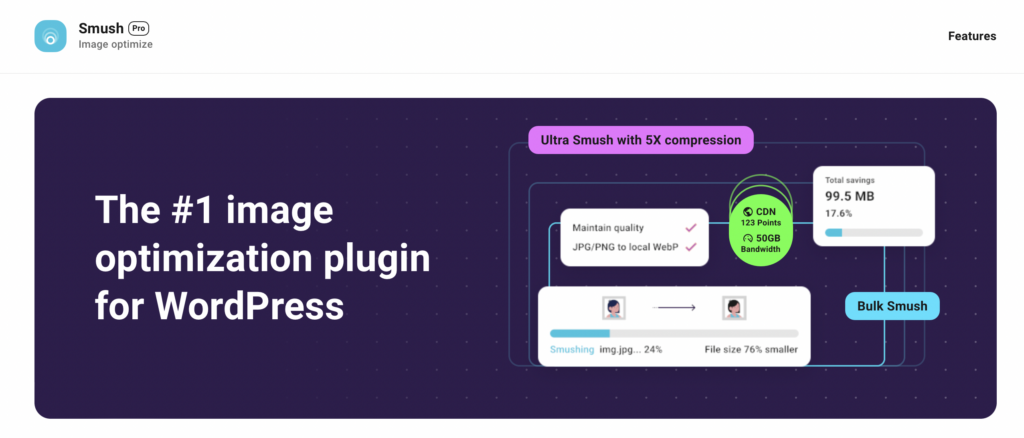Whether you just launched a new website or are working to improve an old one, you need to know how to show up on the search engines. Search engines recognize the quality of your content and how much traffic you get, which can create a vicious cycle if you aren’t getting many eyes on the page. You need to know how to do SEO for your website to increase its traffic.
Fortunately, there are some very basic things you can do to tell Google and other search engines that it’s worth it for them to rank you. Some of these steps are easier to resolve at the beginning, while others can be implemented at any stage of the process.
Let’s dive in.
How to Do SEO for Website Traffic Increases in 12 Easy Steps
Your website’s SEO performance is tied to everything from the name of your website to the structure of your pages to the promotions you run. At every stage of the process, you need to adapt your technique if you want to continue showing up in the search engines.
Here are our twelve best SEO tips to get you thinking about your ranking in the SERPs.
1. Buy the Right Domain Name


The first thing you need to do for search engine optimization is make sure people can find your page. Buying the right domain name is critical. If your domain is not linked to what your business offers or does, then you will have a very hard time staying top of mind for users.
Think of it this way: when someone hears your domain name, do they instantly know who you are or what you offer?
It should also be memorable for your audience. The best idea is to choose something that relates to what you have on offer on your website. Domain names are best kept short and sweet, even if it takes more words to fully explain your offering. Boil it down to the basics and look for domain names that resonate.
2. Organize and Structure Your Website for Search Engines


Showing up in the search engine results means that your website is clearly laid out for Google and the other search engines. Google needs to know how to find your pages and index them.
To this end, don’t be afraid to create content on subpages to make it easier for people to skim and find the answers they need.
This also means you need a clear URL structure that emphasizes the keyword research you conducted. This can also prevent you from creating content on too many pages that all target the same keyword (but more on this soon).
When you are planning your site, have a clear structure not just for the search engines to crawl and index but also for your user’s experience. They should know how the menus work and where to go to get what they want. If you make it too difficult for them, they might bounce quickly, which can hurt you in the search results.
3. Create a Mobile-Friendly Website


More than 92 percent of people are now accessing the internet through their mobile devices. A website that isn’t optimized for mobile is going to be penalized in the Google search results. Search engines want to give users the optimal experience.
A site that isn’t easily accessible on a mobile device gives a subpar experience.
As a result, people are more likely to bounce from your site back to the SERPs. While you might present the answer to the most relevant search queries, you’ll never know because people couldn’t easily use the content.
4. Look for Page Speed


Think about the last time you clicked on a page in the SERPs. How long did it take to load all of the text and pictures that brought it to the top? This is an aspect of technical SEO that you don’t want to discount.
Page speed can make the difference between Google giving you organic traffic and demoting you on the SERPs.
Consider this statistic: a page speed that increases from one second to three seconds increases the probability of bounce rate by 32 percent.
When someone clicks on your website and bounces away within those first three seconds, it tells Google that your website didn’t provide the answers people were looking for. As a result, your search engine rankings are likely to dip even if you hit the search intent perfectly.
5. Look for Gaps in Content Provided by Competitors


Chances are that your competitors aren’t going to get the answers right all the time. They likely have a small gap in the content they create — which is good news for you. If you can spot these gaps in their content management systems, you can score more organic traffic for a blog post or other pages.
This means you need to know your field well, including who your competitors are. It requires quite a bit of research to comb through all of the results on your competitors’ pages and find the gaps. You can use free tools like Google Analytics to track the SEO performance of your competition.
Working in a competitive niche might make this harder, but it can also inspire you to create pages with new content that aren’t surfacing elsewhere in the industry.
6. Keyword Research


How do people find your page? SEO is the answer, and it starts with choosing the right keywords that tell what people are looking for when they find you. With a keyword research strategy in place, you can beat out other websites for the top spots on rankings.
This is a great time to implement keyword research tools that can narrow down what people are looking for. Keyword research can also be as simple as using Google Search Console to see what people type in when they come across your website.
Double down on your efforts here, as they are already working to some degree.
Keep in mind that search engine algorithms respond negatively to black-hat SEO tactics like keyword stuffing. Always keep things above board and center the user experience when you can. This results in people finding your website and staying around for a while, an indicator to Google that your site delivers on its promises.
7. Meta Descriptions, Title Tags, and Data with Relevant Keywords


SEO performance is dependent on more than just what users see when they click on your page. One of our best SEO tips for your website is to pay attention to the less obvious parts of a blog post or any other type of page. You should be filling out your relevant metadata with the keyword research you conducted in the last step.
This means your keyword research tool should be used to help you come up with meta descriptions, title tags, and more.
Think about search engines when creating your permalink and URLs. Incorporating some of your keywords into the link gives Google’s search engine the first indicator of what your page is about and if it delivers on the promise.
8. Insert Internal Links into New Content


Here is one thing you won’t want to miss if trying to do SEO for your website: internal links. This is a core component of an SEO strategy that can seriously boost your rankings. People click on your page because it’s the first organic result on Google. They find that you have a link in your article to another article on your site.
They can’t resist clicking to get more of your high-quality content, increasing the amount of time they spend on your site.
Search engines recognize how long people spend on a web page and it influences your SEO rankings. This also keeps you from creating duplicate content that can cannibalize your keywords. Search traffic will increase when you have good on-page SEO like internal links.
Be sure to see our guide to internal link building here.
9. Optimize Images with Alt Text and Size


This goes hand-in-hand with your site speed because images are often the holdout on a loading page. High-quality images make your site more appealing, but you might need to trim them down to a more easily downloaded size. Compressing your images makes them load faster on a mobile version of the site.
This can be easily done with WordPress plugins like WP Smush.
While you are working on your meta tags, you should also include alt text for your images. If you can, work a keyword into the meta description of your images. This helps them to be indexed under your target keywords on the search engines. It’s a bit of technical SEO that is easy to do — and easy to overlook.
10. Update Content Regularly and Remove Duplicates


Once you have your site structure nailed down and you’ve started conducting keyword research, you need to pay careful attention to your existing pages. Search engines recognize content that has been updated frequently because it gives the most value to the reader.
Don’t let pages sit outdated on your site if you want to do SEO for your website.
However, that doesn’t mean that you want to create a new piece of content that will cannibalize the old. You need to remove any duplicate content from your site, even if they each have a unique meta title. If the content is the same and has the same scope, it’s a duplicate, which confuses Google.
Analytics tools might be able to help you pinpoint pages with the same keywords, allowing you to get more from your SEO strategy.
11. Get More Backlinks


While internal links can be great for your on-page SEO, you might want to consider how you can take advantage of other sites that show up on Google search results. The best option is to create a series of backlinks from other authority sites.
White hat link-building is an essential piece of the puzzle for any site owner looking to do SEO for their website. Getting links from other sites gets you more eyes on your content, grows an audience, and shows search engines you can be trusted. It’s a reliable way to scale your website’s SEO quickly.
12. Promote Content for Search Engine Optimization


Last but not least, you want to promote the content that you want search engine results to prioritize for your company. This might mean directing some paid ads to your content, posting it more regularly on social media platforms, or sending it out as part of an email newsletter.
Whatever you can do to get people looking at your page, it tells the search engines that your content is more relevant and pushes it to the top of the SERPs.
The more organic traffic you can build with your target audience, the clearer it will become to Google and other search engines that you have what people are looking for. Organic SEO is great, and you can do a lot with keyword research, but thoughtful promotion can go a long way too.
Final Thoughts: How Can You Improve Search Engine Optimization on a New Website?
With these tips for how to do SEO for your website, you’ll be leaps and bounds ahead of the competition right out of the gate. You’ll show up in the search results in the prime positions and help more people find your high-quality content.
Search engine optimization is always changing and evolving. What works today might not work next year, and what works for your competitor may not work for you.
Keep your finger on the pulse of the industry, but build a solid plan with the foundational items listed here. Which one will you put in place first?